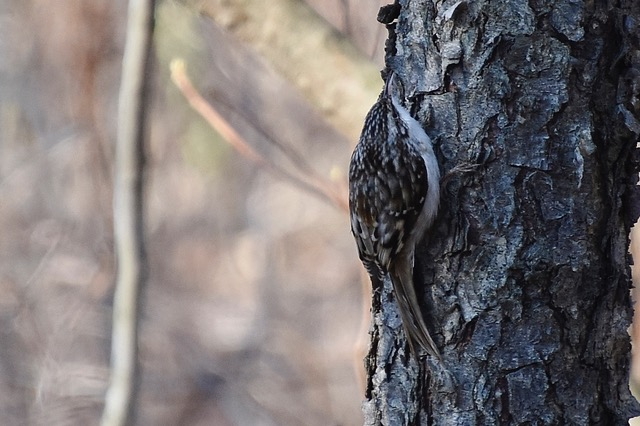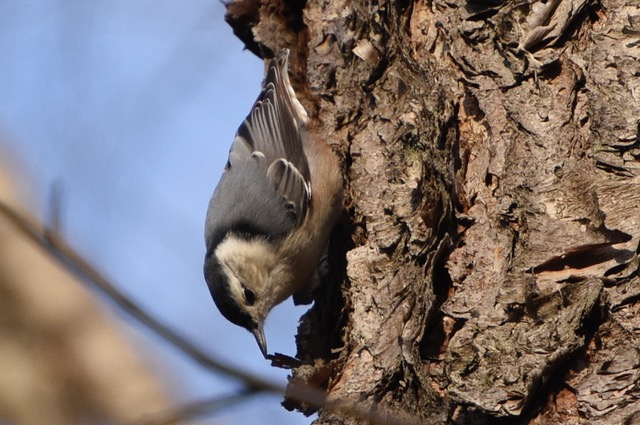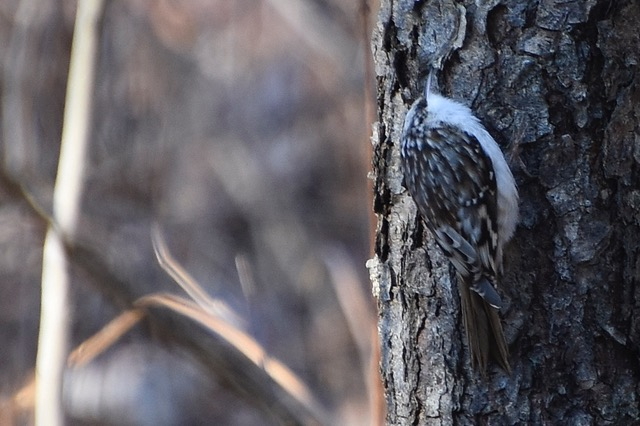Cute and Inquisitive
Among the unique characteristics of some birds is their ability to move up and down tree trunks and their branches. A couple of groups we see at Lumberton Leas fall into this category. These are the Nuthatch and Creeper. The former group is comprised of four species: White-breasted, Red-breasted, Brown-headed and Pygmy Nuthatches. The latter consists of a single species, the Brown Creeper.
The two Nuthatches that we see here at Lumberton Leas are the White-breasted which is a year round resident and the Red-breasted that visits us during the winter months. The Brown-headed is a southeastern bird but it does make its way up into the Delmarva Peninsula just south of us. Given the warming climate it will be interesting to see if it eventually expands its range to our area. The Pygmy is a western bird.
The White-breasted is very common in our woods, along the perimeter path and visiting bird feeders. It vocalizes a nasal “yank, yank” that announces its presence even if you do not see it. However, it is not shy and is very often seen working its way down a tree trunk or branch in search of a meal of insects, their eggs or seeds. It is especially fond of shaggy barked trees like the numerous River Birches in our woods and on our campus. The general rule of thumb is that nuthatches move down trees and branches while Creepers only move upward. Nuthatches very commonly follow the rule but they can also reverse course. Creepers always work their way upward. The winter visiting Red-breasted numbers depend on the quality of the seed crop from the conifers north of our area up into the boreal forests of Canada. This year saw an increased number of sightings on campus as was predicted by people who track the seed crop production to our north.
The White-breasted is very common in our woods, along the perimeter path and visiting bird feeders. It vocalizes a nasal “yank, yank” that announces its presence even if you do not see it. However, it is not shy and is very often seen working its way down a tree trunk or branch in search of a meal of insects, their eggs or seeds. It is especially fond of shaggy barked trees like the numerous River Birches in our woods and on our campus. The general rule of thumb is that nuthatches move down trees and branches while Creepers only move upward. Nuthatches very commonly follow the rule but they can also reverse course. Creepers always work their way upward. The winter visiting Red-breasted numbers depend on the quality of the seed crop from the conifers north of our area up into the boreal forests of Canada. This year saw an increased number of sightings on campus as was predicted by people who track the seed crop production to our north.
Text and photographs by Robert Koch






